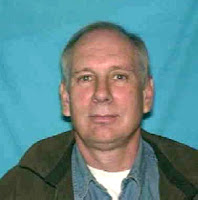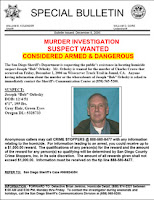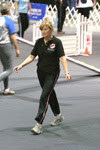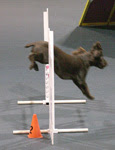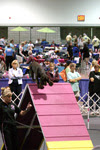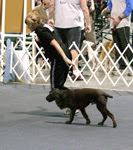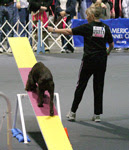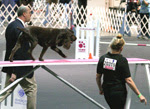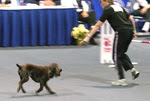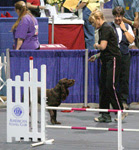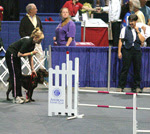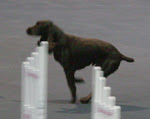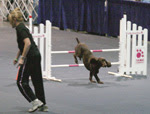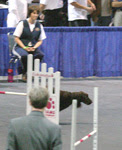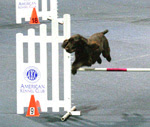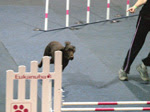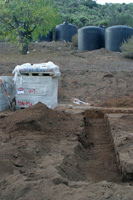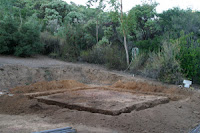Today’s San Diego Union-Tribune has an article about the first hearing in the Charles Crow murder case. In this hearing, Orlosky’s attorney (Paul Pfingst — a former District Attorney himself) presented some elements of Orlosky’s side of the story, including a rough outline of his version of events. There were also some interesting comments by Orlosky’s friends and neighbors. The lead:
A Jamul electrical contractor charged with murder was defending himself against potential thieves who tried to run him down when he caught them, his lawyer told a judge yesterday.
Joseph “Bob” Orlosky “was being ripped off” when he fired on three men he found driving a Jeep on a dirt road that cuts through his rural East County property about 8:30 p.m. on Dec. 1, Orlosky’s lawyer, former District Attorney Paul Pfingst, told Superior Court Judge Charles W. Ervin.
“The victims tried to kill Mr. Orlosky and Mr. Orlosky defended himself,” Pfingst said.
This is pretty close to one of the scenarios that I and several commenters have speculated about in past posts on this event. It makes a lot more sense than the idea that Orlosky just randomly started shooting at the vehicle Crow was in, for no good reason.
Another excerpt:
Pfingst told the judge Orlosky never left Jamul during the time police were looking for him and was continuing his business and consulting with Pfingst about surrendering.
Several commentors on previous posts speculated that Orlosky was hiding out here in Jamul. It appears they were right. If it’s true that he was continuing his business affair, that seems pretty brazen — and I’m amazed that his contacts with other people didn’t lead to him being caught…
The police outlined their version of events:
Police in court documents said Crow, 23, and his two companions were traveling in a Jeep Cherokee north on Wisecarver Truck Trail in Jamul when they passed a white Ford truck.
After coming upon a locked gate across the road, they returned south on Wisecarver Truck Trail. Orlosky ran from behind his parked truck, stood in the road and fired a rifle at them, police said.
Orlosky again fired at the Jeep after it passed him, hitting Crow in the head and Monge in the elbow, police said. They said the Jeep stalled after turning onto Skyline Truck Trail, and Crow’s companions jumped out to hide in bushes, making several calls to 911. They remained hidden until sheriff’s deputies arrived.
This is more-or-less what we heard in the earliest reports. There’s no statement in here about Orlosky’s motivation for shooting. I infer from the absence of an expressed motive that the police (and the District Attorney) are uncertain of a motive, or that they believe a motive will detract from their murder charge. Or it could be that they just don’t want to make their theory about the motive public at this point.
Here’s Orlosky’s version of events:
Pfingst said Orlosky had been watching television in his living room when sensors he had installed along the road warned that intruders were on his property.
Fearing he was about to be robbed, Pfingst said, Orlosky went to investigate and was nearly run down. “The people who were on that property had no legitimate reason to be there at that time of night,” Pfingst said.
This jibes with some of the things asserted by commentors on earlier posts; things I had not been able to find any public information on. And in its rough outline, it matches one of the scenarios we have discussed in previous posts: that Orlosky’s motive for the shooting was to defend himself or his property, or both. This makes much more sense than a random, unmotivated shooting. It doesn’t necessarily justify Orlosky’s actions; we’d have to know a lot more about what happened to be able to determine that. One possible scenario is that the boys were on Orlosky’s property, Orlosky got angry — but wasn’t actually directly threatened in any way — and started shooting. That would be, in my opinion at least, an unjustified act. However, another possible scenario is that the boys were on Orlosky’s property, saw him on the road, interpreted his presence as a threat, and tried to run him down — at which point Orlosky started shooting. In that scenario, Orlosky’s actions might be justified.
Note to friends and family of Charles Crow: I am not asserting that either of the above scenarios is what actually occurred. I am simply outlining the range of possibilities I see in a case that this concerned Jamul citizen would like to understand. As a local resident, I have a vested interest in understanding why this murder occurred a mile or so from my home. I’d like to know whether we had a lunatic shooting people at random, or we had a homeowner defending himself and his property. Those are two very different versions of events…
The UT reporter managed to get some additional information that didn’t come from a press release or a transcript, the first time that’s occurred in their reporting on this story:
Outside the courtroom, Orlosky’s sister, Dana Ross of San Carlos, said that her brother had lost “hundreds of thousands of dollars” in copper wiring and equipment to thieves.
Pfingst said that just two weeks before the shooting, Orlosky had made a citizen’s arrest on three men he said he had caught stealing copper wiring on his property.
A former neighbor, Maggie Schweitzer, said Orlosky often came to her aid when trespassers approached her home. “He is a good man,” she said, “and we knew from the beginning he was protecting his family and his property.”
Again, this jibes with some of the information posted by commentors on previous posts; information that I could not corroborate at all. The statements paint a sketchy picture of a man who perhaps isn’t either a lunatic or the human manifestation of evil, as well as some context to understand how Orlosky was feeling on the night of the shooting.
This is more than I expected to have made public at this stage of affairs. It will be interesting — and comforting — to see the story unfold in more detail as the case progresses…


